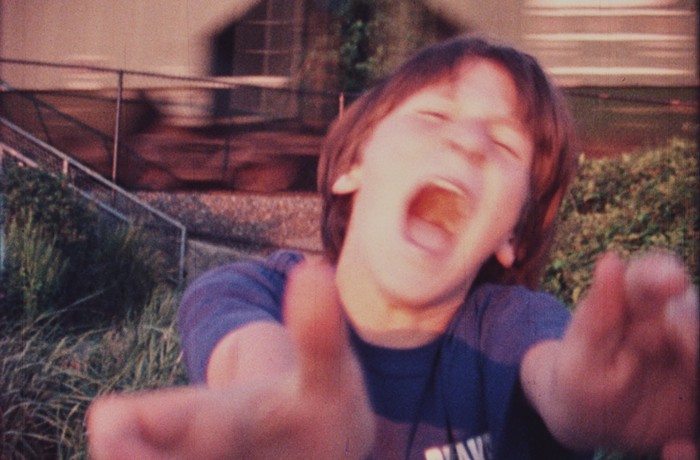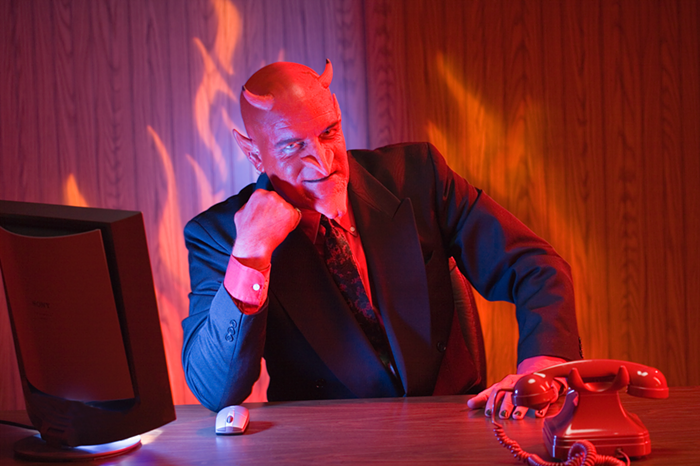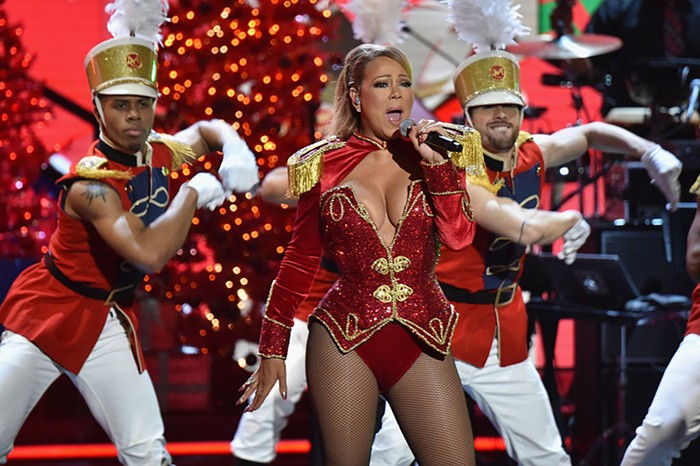ADAM ROSKO was working his shift at Hawthorne's Excalibur Comics when a woman came in to see if he was interested in purchasing a box of Star Trek memorabilia. She had heard Adam was involved with the Trek in the Park shows, and thought he might be able to provide a good home for her collection—she was worried that when she died her sons would just throw the whole thing away. The woman came in with a new box every few months, and each time Adam gave her $20 for it, contents unseen. Then one day she offered to deliver, gratis, the entirety of her remaining collection—27 more boxes.
And that's how Adam Rosko became the proud owner of an extensive collection of memorabilia documenting the earliest days of Star Trek fandom. It was a major score—the boxes' contents range from products that are obviously collectibles to intensely personal articles of fandom (no, that's not a slash fiction euphemism—Spock-on-Kirk action was notably absent). There are homemade Christmas cards, featuring images obtained by photographing the television. A tiny viewfinder, containing a close-up image of Leonard Nimoy's face. Zines. Decals. Vintage glassware. Unselfconscious poetry. Nimoy's 1977 autobiographical opus I Am Not Spock. Years' worth of any magazine that mentioned the show; a handwritten spreadsheet that appears to document the efforts of a group of friends—all women—to complete their collection of Star Trek products. It's an incredible stash, its existence a feat of impressive dedication in a pre-digital era, and Rosko was a logical choice to give it a good home.
As a co-founder of Trek in the Park, Adam—along with his sister Amy—transformed a nerdy fondness for the classic series into one of last summer's most popular theater events. Their live-action production of the episode Amok Time was a surprise hit, packing Woodlawn Park's amphitheater and racking up positive local reviews (the Mercury's Erik Henriksen breathlessly insisted it was "the most fun you'll have watching a play all summer") as well as attention from national fan sites like trekmovie.com. Audiences even came down from Seattle to see the show, some of whom, under the moniker Outdoor Trek, are launching a similar project there later this month.
On a recent sunny Sunday at Woodlawn Park, the cast gathered for the first full run-through of their new show—the 1967 episode Space Seed, which introduced the villain Khan to the Star Trek universe, laying the groundwork for the 1982 film The Wrath of Khan. As the actors ran through their lines, other cast members sat on the grass, snacking on cookies decorated with the Star Trek logo. Curious joggers slowed down to check out the action; a few kids sat down to watch. Though costumes, props, and sound effects weren't yet in place, the cast gave a spirited run-through, striking the same knowing-but-never-kitschy tone that made last summer's show such a hit.
A few days after the rehearsal, Adam, Amy, and I met at Bonfire Lounge in Southeast Portland to talk about Trek in the Park. When I asked them where the inspiration for the show came from, they both laughed. "Right here!" Adam says. Adam was in a production of Troilus and Cressida at Woodlawn Park, and knew he wanted to do a project of his own, something outdoors. One night over drinks at "the Bon," Amy, who has a background in TV and film production (she's also worked as an events coordinator for the Mercury), suggested the idea of working together on a show. Then it was only a matter of figuring out what they wanted to do.
"We considered a lot of plays and comic books," Amy explains, but it was while scanning Adam's DVD collection that they realized a Trek episode would be perfect. From there, it was a quick hop to "Oh yeah, what about the one where Kirk and Spock fight?"
Trek in the Park deliberately avoids camping up their material—which is not to say the material doesn't bring a little camp of its own.
"There are certain things we knew we had to do with Amok Time," says Amy. "We had to rip the shirt, we had to break the gong." (The Roskos are tightlipped on which similar moments audiences can expect from Space Seed.) "The thing that I don't ever want to do is just make it a shadow play [of the TV show]," Adam says. "You've got to use the tools that are given to you as outdoor theater."
To that end, concessions are made to the medium: Each episode is transcribed in full, and then adapted as necessary to make it work for the stage (blocking is rearranged; the episode's commercial breaks translate to lengthy pauses). Homemade costumes are provided by the Roskos' mom, live music and effects are courtesy of Peter Dean, and the minimal sets are hand-built, a DIY approach that pays fitting homage to the series' famously low-budget aesthetic.
The show, the Roskos say, largely cast itself—Adam's roommate Jesse Graff modified his ears to play Spock, their friend Paul Pistey tried his hand at the sardonic Bones, and, though he hadn't intended on acting in the show at all, his friends persuaded Adam it was only fitting he take the role of Kirk. For Space Seed, Ryan Castro, who played Chekov last summer, bulked up—and switched accents—to play the role of Khan. Local radio personality/nerd champion Fatboy Roberts steps in as a helmsman, and even my boss, Wm. Steven Humphrey, has the dubious honor of playing a Redshirt (spoiler: he dies).
Amy and Adam hope the new episode will satisfy audiences the same way that last year's show did—and that audiences will keep coming back. Amy and Adam (and their company, Atomic Arts) have committed to at least a "five-year mission."
"We just want the same reactions we got last year," Amy says. "The guy in the front row going 'Yes, they did that.'"
"But really, we have no idea how people will respond," Adam adds. "That's the thing that almost threw me the first time. I just said 'Space...' in the prologue, and people started clapping."
If the second episode of Trek succeeds with Portland audiences—as both the snippet of the show that I saw, and Portland's ravenous appetite for nerdery suggest—it will in part be because Atomic Arts has a palpably good time producing these episodes, and that enthusiasm is contagious.
"Doing this play has brought me back to why I do theater in the first place," Adam says. "Great characters, cool costumes, good stories. It's the most basic form of theater. We just want to make people happy—there's nothing more in it than that, to make people crazy happy. Every point during rehearsal, it's all working toward making it more fun."
[slideshow-1]












